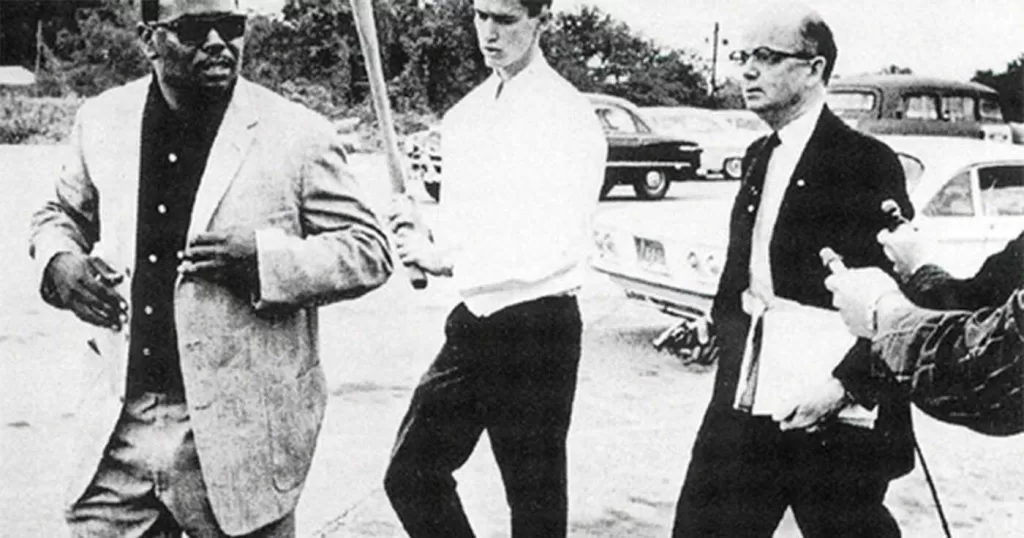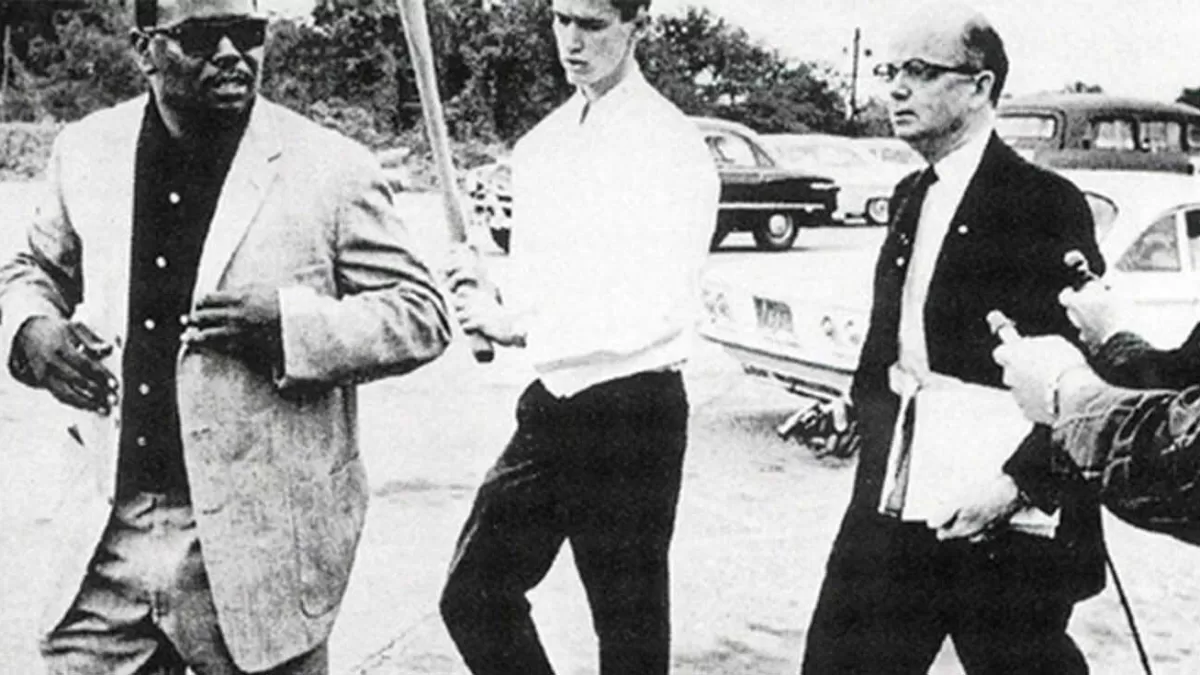
In 1974 I found myself traveling through Arkansas on my way to California. Since I wasn’t old enough to drive, I hitched a ride with a man driving a large truck. He had in his possession an axe handle autographed by Lester Maddox. I had no idea who Lester Maddox was, but thinking back on this now, I realize that he gave me the ride because he was just dying to show someone his axe handle.
I have since discovered that Mr. Maddox was a staunch segregationist who, in opposition to the Civil Rights Act of 1964, closed down his Atlanta, Georgia restaurant rather than face the prospect of serving his famous fried chicken to black customers. It turns out that the axe handle stands as a symbol of his views. It is also very handy when someone needs to be bashed over the head for some social indiscretion like ordering fried chicken while being black.
There were quite a few Georgians back in the 1960s who didn’t like the federal government telling them how to treat their black neighbors. The evidence of this is that, two years after shutting down his restaurant, they elected Lester their governor.
You may find it surprising that Governor Maddox was a Democrat. Many white Georgians were…until a few years later when Richard Nixon convinced them that the Democrats were becoming too fond of racial minorities.
A Lester Maddox axe handle is a lot like a baseball bat. They both have about the same size and heft. One is often signed by a famous baseball player and the other signed by a restaurant owner. However, if I came after you with a baseball bat, you’d probably wonder what the heck you had done. Now, if I came at you with an axe handle signed by Lester Maddox you’d know exactly what was up. That’s right; you’d just know to go find your chicken somewhere else. That’s the power of symbols.
The Supreme Court has actually weighed in on symbols. In Tinker v. Des Moines, 1969, the court upheld the right of high school students to wear black armbands in protest of the Vietnam War. Given that many of the other students had fathers and brothers fighting overseas, the principal feared that the armbands might provoke those who saw themselves as more patriotic. After thinking this one through, he decided to suspend the protesting students to avoid disrupting the learning environment. While it was certainly his job to keep the school safe, the court ruled that his fear of potential trouble was not enough to limit the free speech rights of the students. In other words, he could suspend them only after the huge brawl, not before it.
It’s amazing to me that a piece of cloth on the arm of a high school kid became a symbol challenging the morality of dropping bombs on people in faraway places. I’ve seen a lot of moments like this when the kids are just flat out smarter than the adults.
Two clarifications of free speech arose from Tinker. A young person’s rights are not “shed at the schoolhouse gate” and the First Amendment can be applied to all kinds of speech including symbolic arm wear. I think it’s a hopeful sign that we have the Supreme Court out there giving us guidance in all this, especially when the other two branches of government can’t agree on what to have for lunch.
Like some of the most interesting Supreme Court decisions, Tinker set precedents that have been applied to several subsequent cases involving student rights. In one, students were punished at a school-supervised event after displaying a sign that read “Bong Hits for Jesus.” You may have heard about this one. It was in all the papers. Of course, being “in all the papers” doesn’t quite mean what it used to mean.
In another case, students were punished for wearing bracelets that said “I Heart Boobies” in support of breast cancer awareness. The principal claimed that the middle school boys were a lot more concerned about the booby part than the cancer part. By the way, if you ever wanted to learn what a middle school is all about, chatting with that principal would be a really good place to start.
In the end, the court basically said no to the “Bong Hits” and yes to the “Boobies.” Apparently “Bong Hits” symbolizes illegal activity and the “Boobies” symbolize…well…you know. I think it’s hopeful that we spend some time attending to the rights of young people even though a lot of their speech seems to revolve around predictable topics.
One of the coolest symbols to emerge in the last year is the pussy hat. It’s as if half the country woke up one morning and said, “We’re not going to take it anymore!”
It’s kind of funny that people just say “pussy hat” out loud without the slightest snicker. Funnier, yet, is that when Donald Trump was recorded saying ***** on tape, it gets bleeped out. Sometimes it looks like p**** and other times it looks like p***y… just to make sure we know what all the *s mean. I guess we just have to get used to the idea that sometimes you can say a word and sometimes you can’t—like middle school.
I think it’s probably a good thing that most of the people that wear pussy hats are women. I have a hard time with a guy acting like he’s not going to take it anymore; since it is, after all, the guys who have been dishing it out for so long. However, now that I think about it, this sentiment may contradict what the hat stands for in the first place. That’s the tricky thing about symbols.
Another tricky thing is that once an everyday object takes on symbolic meaning, it becomes difficult to separate its usefulness from its symbolism. For instance, every time I chop wood, I smell fried chicken.
This article was originally published in Messenger Mountain News, Vol. 2, Issue #1, January 12, 2018.





